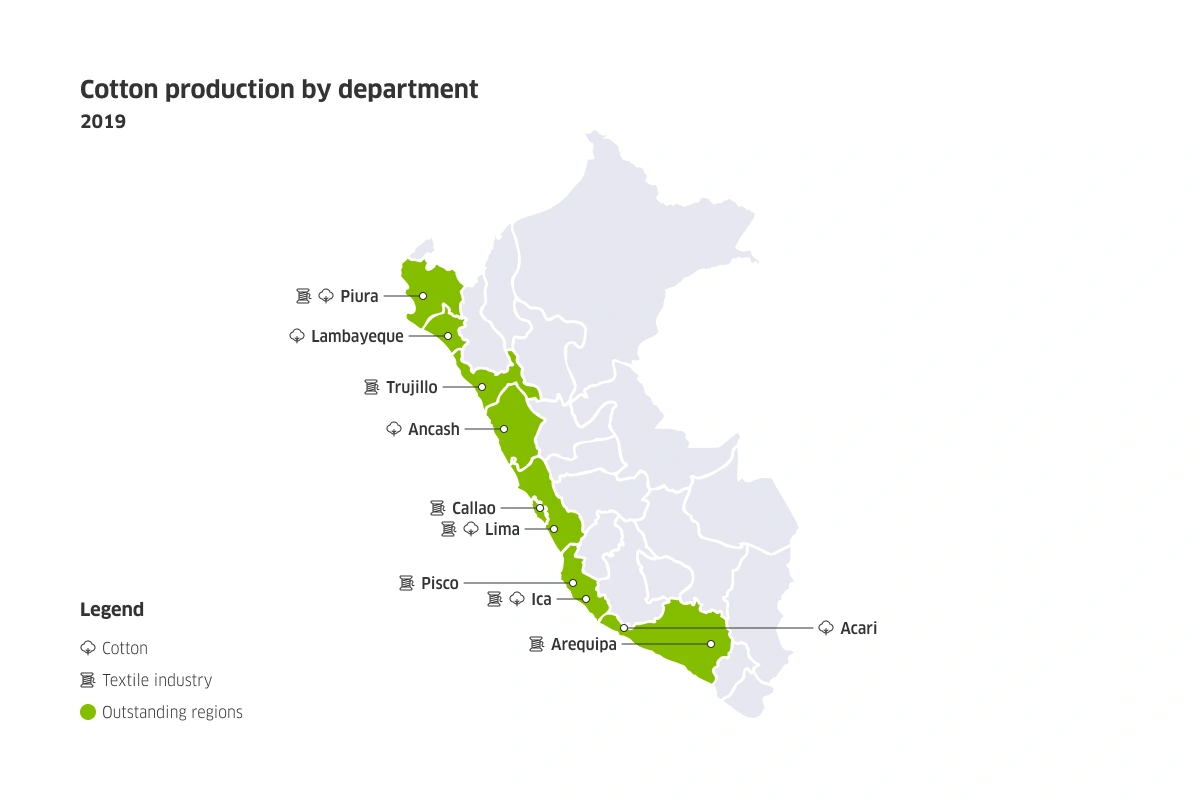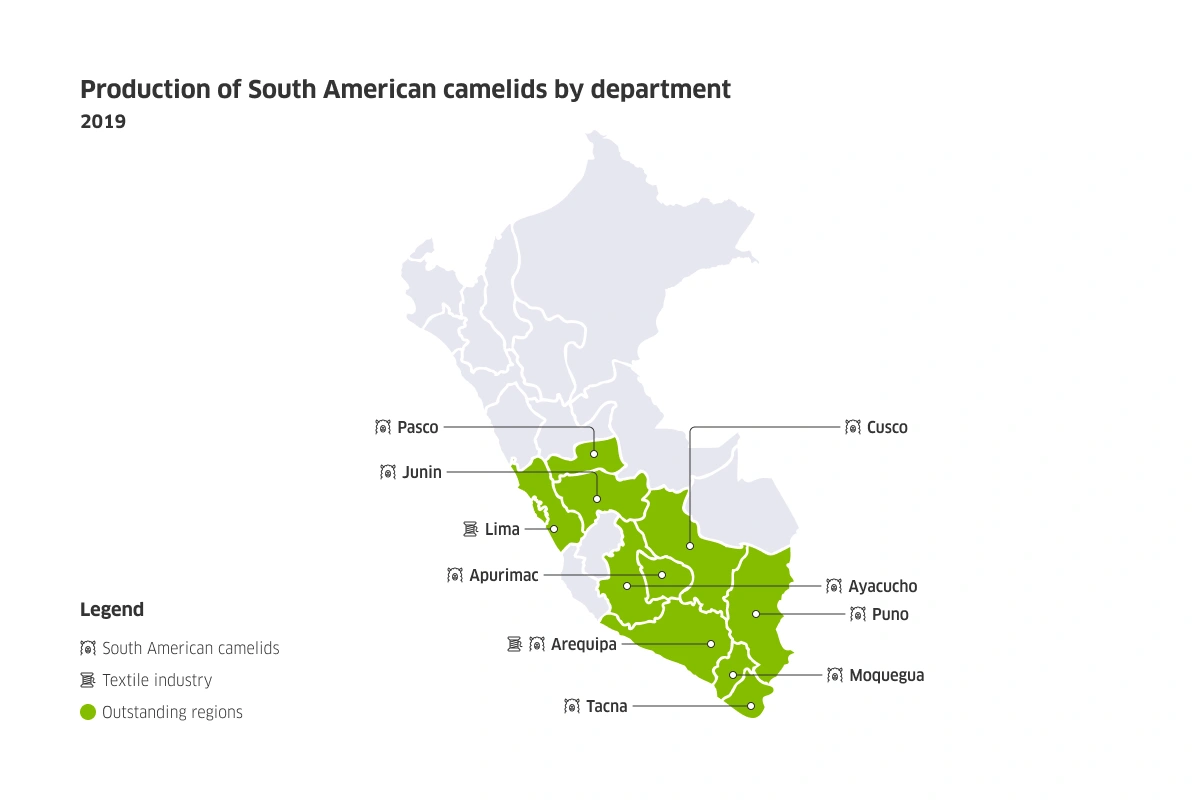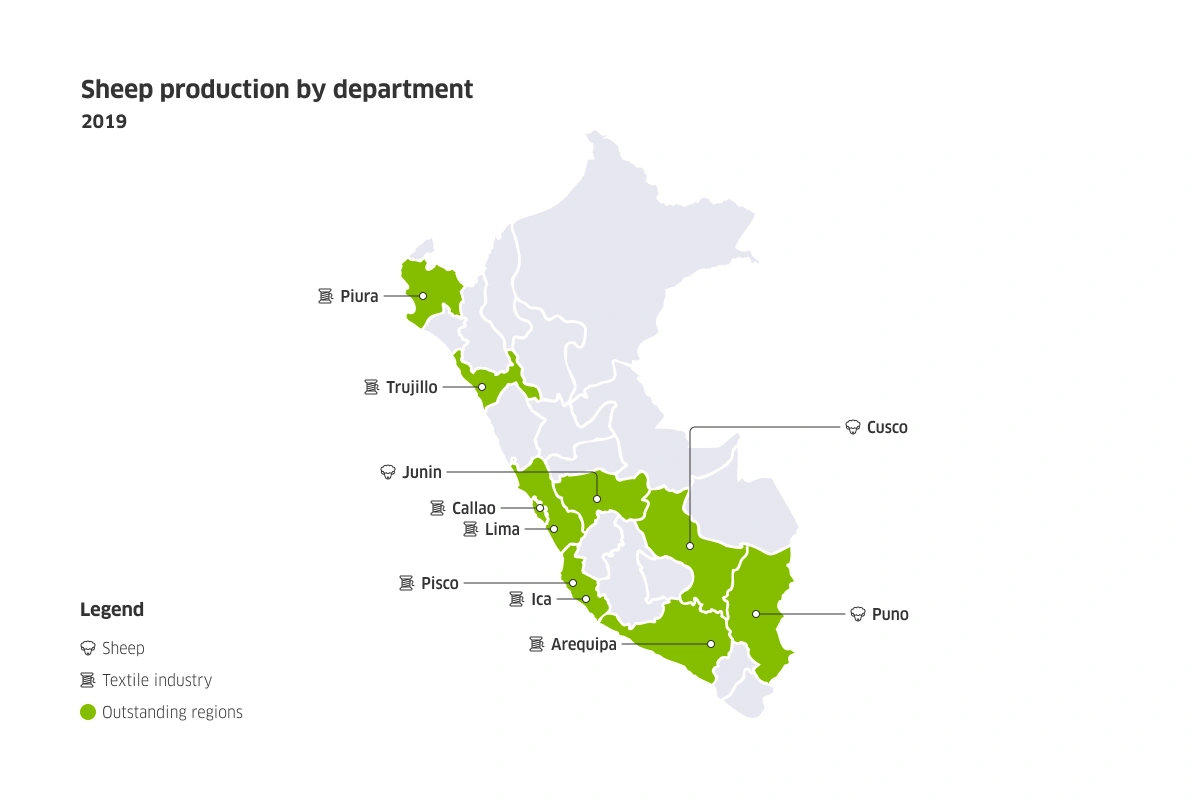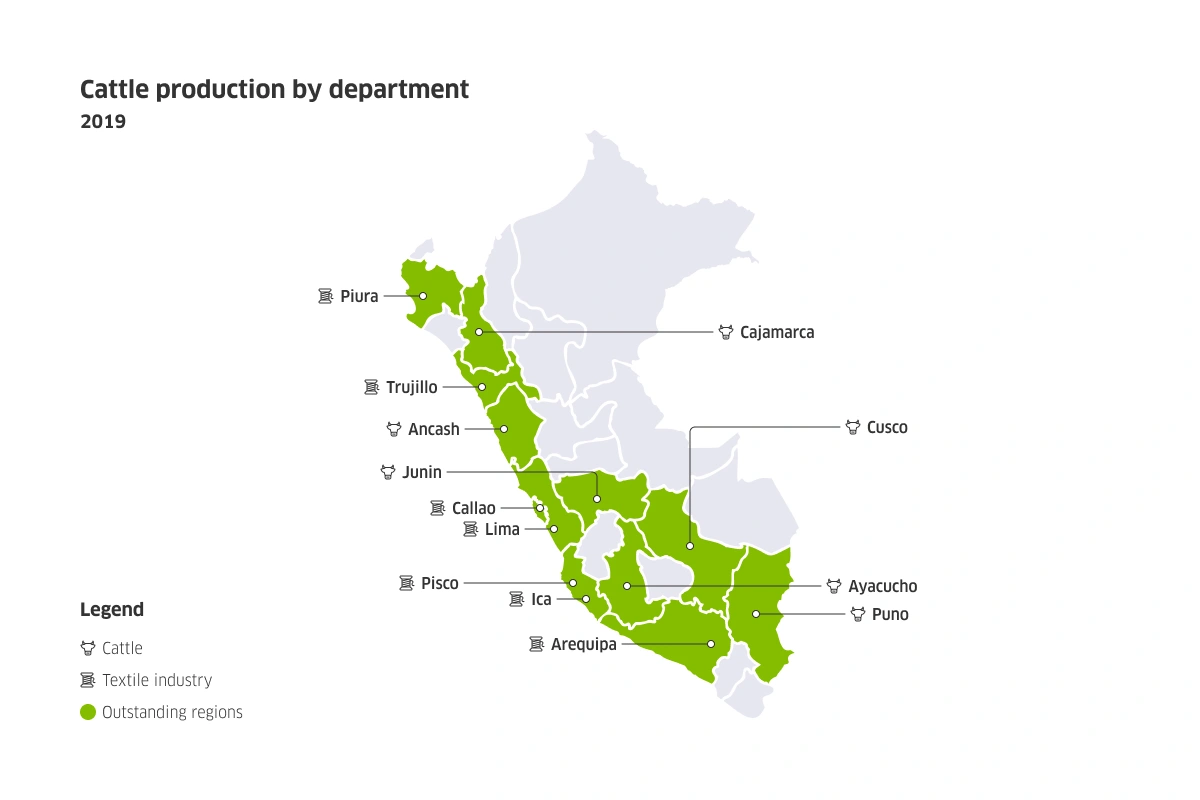Textile and clothing
Peruvian fibers like cotton and alpaca are renowned in major fashion capitals worldwide. Leading global brands, including Lacoste, Polo, Ralph Lauren, Tommy Hilfiger, Gap, Armani, and Nike, incorporate these high-quality materials into their products. Additionally, Peru’s cotton growers, fashion brands, and textile manufacturers are part of the world's largest cotton sustainability initiative, the Better Cotton Initiative (BCI).
FDI in textile and clothing
Period: 2003 - April 2024

USD
Millions of FDI in the sector.
Photo: PROMPERÚ
Source: fDi Markets (2024)

Projects in total.
Photo: Shutterstock
Source: fDi Markets (2024)

Jobs generated
Photo: Shutterstock
Source: fDi Markets (2024)
Potentials in textile and clothing
-
Cotton
-
Cotton
-
South American camelid
-
Sheep
-
Cattle




Sector highlights
USD million of sector GDP in 2022. 7.9 % of manufacturing GDP.
Source: National Institute of Statistics and Informatics (2022)
Thousand jobs in 2022. Growth rate in 2021 of 17.0%.
Source: Ministry of Production (2022)
Millions FOB in exports in 2022
Source: InfoTrade - PROMPERÚ
Subsectors of interest
Clothing and footwear retail
Rising participation in e-commerce: Online retail is growing rapidly in Peru. Expanding youth market: With a young and growing population, Peru presents a larger market for potential retailers, promising sustained long-term growth.
Clothing manufacturing
Large companies dominate Peru’s exports and are focused on technological innovation to make their processes more sustainable.
There are also business opportunities in outsourcing services for the clothing industry and other production stages that support exporting companies.
Textile production
Technological advancements in the breeding of key livestock reserves for natural fiber production:
1st in the world for alpaca, sheep, and vicuña populations.
2nd in the world for llama population.
Large textile companies have achieved vertical integration, incorporating spinning and weaving processes into their operations.
Tax incentives
Anticipated recovery of the General Sales Tax (RERA IGV)
It enables projects with long pre-operational phases to recover the IGV (General Sales Tax) on investments made in goods, services, construction contracts, and more, improving the company’s liquidity and strengthening its financial structure.
Law N°.31661: Temporary flexibility in the investment amount required to benefit from the regime.
Drawback
The refund allows exporters to recover a percentage of the FOB value of exported goods, compensating for the increased production costs caused by customs duties on imported inputs used or consumed in production. The refund amount is equivalent to three percent (3 %) of the FOB value of the exported good, with a cap of fifty percent (50 %) of its production cost, based on the rate in effect when the application is approved. This refund has a tax nature, and it's essential to ensure compliance with the requirements for applying the incentive.
For the textile and clothing sector, the Drawback system may apply to the use of labels, accessories, and other inputs incorporated into garments, if applicable. This could serve as an incentive for textile investments aimed at producing finished goods for export from Peru.
Have you already invested in Peru?
We provide personalized assistance to help streamline and accelerate your investment process in Peru.

